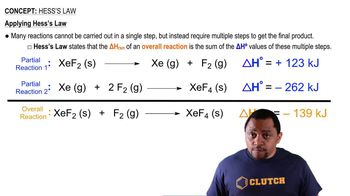Here are the essential concepts you must grasp in order to answer the question correctly.
Bragg's Law
Bragg's Law relates the wavelength of X-rays to the angle of diffraction and the distance between atomic layers in a crystal. It is expressed as nλ = 2d sin(u), where n is the order of reflection, λ is the wavelength, d is the interplanar spacing, and u is the angle of incidence. This law is fundamental in crystallography for determining the arrangement of atoms within a crystal.
Recommended video:
Wavelength
Wavelength is the distance between successive peaks of a wave, commonly denoted by the symbol λ. In the context of X-rays, it is crucial for understanding how X-rays interact with matter, particularly in diffraction experiments. The wavelength influences the resolution and the ability to distinguish between different atomic layers in a crystal.
Recommended video:
Frequency-Wavelength Relationship
Interplanar Spacing
Interplanar spacing (d) refers to the distance between parallel planes of atoms in a crystal lattice. This spacing is a key parameter in determining how X-rays are diffracted by the crystal. By applying Bragg's Law, one can calculate the interplanar spacing using the wavelength of the incident X-ray and the angle of maximum reflection.
Recommended video:
Standard Notation to Scientific Notation
 Verified step by step guidance
Verified step by step guidance


